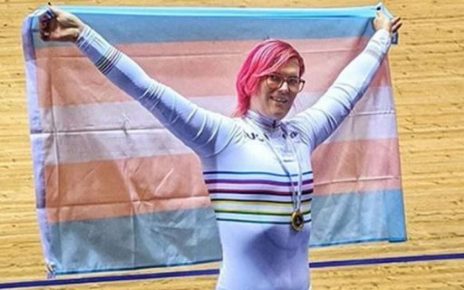By Stuart Lieberman | June 26, 2019, 11 a.m. (ET)
 Brandon Lyons, pictured above competing at a UCI Para-cycling Road World Cup in 2018, is hoping to make his first U.S. Paralympic Team in 2020.
Brandon Lyons, pictured above competing at a UCI Para-cycling Road World Cup in 2018, is hoping to make his first U.S. Paralympic Team in 2020.
On May 24, 2017, exactly three years to the day after he became paralyzed from the chest down, Brandon Lyons became the first handcyclist to become a full-time resident at the U.S. Olympic & Paralympic Training Center.
“At that time, I had no race experience and thought I would just give it a shot” said Lyons, who had to partake in a two-week tryout and plead his case to U.S. Paralympics coaches. “I knew I could do it if I had the right resources, and apparently they saw something in me and said that I had potential.”
And apparently, they were right.
Two years later, Lyons is a Paralympic Games Tokyo 2020 hopeful gearing up to compete in his third U.S. Para-cycling Road National Championships this week in Knoxville, Tennessee. He made his first national team in January and has competed at four world cup events, getting faster and placing higher at each one. He’s now hoping to qualify for the world championships in the road race or time trial, with the idea that a medal on the world stage would definitely help his case for a U.S. Paralympic Team selection next year.
Like the snap of the fingers, Lyon has made it all look so easy, too.
“I’ve just gone with the flow,” he said. “That’s the way I’ve been my entire life.”
Growing up, Lyons was a dedicated team-sport athlete, playing football, basketball and lacrosse. He played lacrosse in college at Penn State, where he graduated from in 2012 with a degree in supply-chain management. He went on to work for Ernst & Young in Washington D.C., and his accounting career quickly excelled in no time. He was recognized as the Supply Chain Rookie of the Year in his first year on the job.
But in 2014, while he was hanging out with friends at a beach on Memorial Day weekend, he dove into shallow water and broke his back at the T5/T6 vertebrae. He was paralyzed from the chest down.
His life changed, but he continued to roll with the flow, returning to work at EY just four months later. When he was discharged from the hospital, he received a handcycle from his family as a resource to get active again.
“The first time I took the handcycle out it was so hard just for me to get out of our driveway with it,” Lyons said. “I then took it out a second time and went to a little island with it and rode around for an hour, and after that thought I could definitely do this.
“I could leave my wheelchair behind, and I was just a guy riding a different bike that nobody knows. It was really a sense of freedom at the time where I could just get out and forget about everything.”
Prior to his accident, Lyons had been training for his first marathon, the Marine Corps Marathon in Washington D.C. He called the event organizers to tell them what had happened, and five months after paralyzing his back they allowed him to complete the marathon in a handcycle.
Come 2016, still focused on his recovery, Lyons was pulled into a clinical trial in San Diego. It would be the first time stem cells were put directly into a spinal cord in the U.S. During his time out west in an advanced rehabilitation gym, Lyons was introduced to former Ironman world champion David Bailey, who ignited Lyons’ passion for cycling and pushed him to go faster. Lyons brought his handcycle out to San Diego and immediately took off with it.
From that moment, he was eager to get back to competitive athletics and quickly made a name for himself in the deepest classification in U.S. Paralympics Cycling, the men’s H3 classification. He invested himself full-time to the bike while still working remotely part-time for EY from Colorado Springs, Colorado.
He’s excelled off the field of play, too, serving as a Paralympic ambassador in the community. He even took the opportunity to discuss Paralympic inclusion with Sarah Hirshland, the U.S. Olympic & Paralympic Committee Chief Executive Officer, and was proud to see the organization’s historic announcement last week to rename itself the USOPC.
“It brings it to the forefront where it’s now one entity,” Lyons said. “It really started last year when the new CEO Sarah Hirshland came here and was very invested in trying to make this one entity that was very inclusive of the Paralympic Movement. I jumped at the opportunity to sit down with her for breakfast when she first started and chat. The first step for us was giving equal pay to Paralympians who medal at Games by way of the Operation Gold Awards program. And then this is the second step right behind it. We’re moving in the right direction, and now it’s about getting the word out to the masses to change perceptions.”
Stuart Lieberman has covered Paralympic sports for the International Paralympic Committee since 2011, including the 2012, 2014 and 2018 Paralympic Games. He is a freelance contributor to TeamUSA.org on behalf of Red Line Editorial, Inc.

